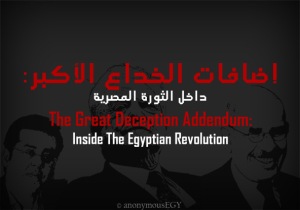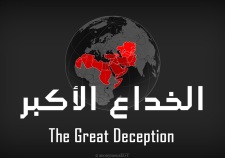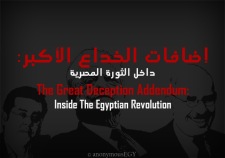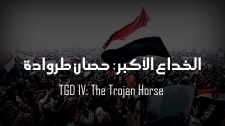April 6 and the lead up to the 25th of Jan Revolution
Under the title “A Tunisian-Egyptian Link That Shook Arab History” the New York Times ran a report about links between the Tunisian revolt, the Egyptian Revolution, Otpor, April 6 & Wael Ghonim.
By DAVID D. KIRKPATRICK and DAVID E. SANGER
Published: February 13, 2011
 The Egyptian revolt was years in the making. Ahmed Maher, a 30-year-old civil engineer and a leading organizer of the April 6 Youth Movement, first became engaged in a political movement known as Kefaya, or Enough, in about 2005. Mr. Maher and others organized their own brigade, Youth for Change. But they could not muster enough followers; arrests decimated their leadership ranks, and many of those left became mired in the timid, legally recognized opposition parties. “What destroyed the movement was the old parties,” said Mr. Maher, who has since been arrested four times.
The Egyptian revolt was years in the making. Ahmed Maher, a 30-year-old civil engineer and a leading organizer of the April 6 Youth Movement, first became engaged in a political movement known as Kefaya, or Enough, in about 2005. Mr. Maher and others organized their own brigade, Youth for Change. But they could not muster enough followers; arrests decimated their leadership ranks, and many of those left became mired in the timid, legally recognized opposition parties. “What destroyed the movement was the old parties,” said Mr. Maher, who has since been arrested four times.
By 2008, many of the young organizers had retreated to their computer keyboards and turned into bloggers, attempting to raise support for a wave of isolated labor strikes set off by government privatizations and runaway inflation.
After a strike that March in the city of Mahalla, Egypt, Mr. Maher and his friends called for a nationwide general strike for April 6. To promote it, they set up a Facebook group that became the nexus of their movement, which they were determined to keep independent from any of the established political groups. Bad weather turned the strike into a nonevent in most places, but in Mahalla a demonstration by the workers’ families led to a violent police crackdown — the first major labor confrontation in years.
Just a few months later, after a strike in Tunisia, a group of young online organizers followed the same model, setting up what became the Progressive Youth of Tunisia. The organizers in both countries began exchanging their experiences over Facebook. The Tunisians faced a more pervasive police state than the Egyptians, with less latitude for blogging or press freedom, but their trade unions were stronger and more independent. “We shared our experience with strikes and blogging,” Mr. Maher recalled.
For their part, Mr. Maher and his colleagues began reading about nonviolent struggles. They were especially drawn to a Serbian youth movement called Otpor, which had helped topple the dictator Slobodan Milosevic by drawing on the ideas of an American political thinker, Gene Sharp. The hallmark of Mr. Sharp’s work is well-tailored to Mr. Mubark’s Egypt: He argues that nonviolence is a singularly effective way to undermine police states that might cite violent resistance to justify repression in the name of stability.
The April 6 Youth Movement modeled its logo — a vaguely Soviet looking red and white clenched fist—after Otpor’s, and some of its members traveled to Serbia to meet with Otpor activists. (More on Otpor-April 6 connection here)
Another influence, several said, was a group of Egyptian expatriates in their 30s who set up an organization in Qatar called the Academy of Change, which promotes ideas drawn in part on Mr. Sharp’s work. One of the group’s organizers, Hisham Morsy, was arrested during the Cairo protests and remained in detention.
“The Academy of Change is sort of like Karl Marx, and we are like Lenin,” said Basem Fathy, another organizer who sometimes works with the April 6 Youth Movement and is also the project director at the Egyptian Democratic Academy, which receives grants from the United States and focuses on human rights and election-monitoring. During the protesters’ occupation of Tahrir Square, he said, he used his connections to raise about $5,100 from Egyptian businessmen to buy blankets and tents.
‘This Is Your Country’
Then, about a year ago, the growing Egyptian youth movement acquired a strategic ally, Wael Ghonim, a 31-year-old Google marketing executive. Like many others, he was introduced into the informal network of young organizers by the movement that came together around Mohamed ElBaradei, the Nobel Prize-winning diplomat who returned to Egypt a year ago to try to jump-start its moribund political opposition.
Mr. Ghonim had little experience in politics but an intense dislike for the abusive Egyptian police, the mainstay of the government’s power. He offered his business savvy to the cause. “I worked in marketing, and I knew that if you build a brand you can get people to trust the brand,” he said.
The result was a Facebook group Mr. Ghonim set up: We Are All Khalid Said, after a young Egyptian who was beaten to death by police. Mr. Ghonim — unknown to the public, but working closely with Mr. Maher of the April 6 Youth Movement and a contact from Mr. ElBaradei’s group — said that he used Mr. Said’s killing to educate Egyptians about democracy movements.
He filled the site with video clips and newspaper articles about police violence. He repeatedly hammered home a simple message: “This is your country; a government official is your employee who gets his salary from your tax money, and you have your rights.” He took special aim at the distortions of the official media, because when the people “distrust the media then you know you are not going to lose them,” he said.
He eventually attracted hundreds of thousands of users, building their allegiance through exercises in online democratic participation. When organizers planned a “day of silence” in the Cairo streets, for example, he polled users on what color shirts they should all wear — black or white. (When the revolt exploded, the Mubarak government detained him for 12 days in blindfolded isolation in a belated attempt to stop his work.)
After the Tunisian revolution on Jan. 14, the April 6 Youth Movement saw an opportunity to turn its little-noticed annual protest on Police Day — the Jan. 25 holiday that celebrates a police revolt that was suppressed by the British — into a much bigger event. Mr. Ghonim used the Facebook site to mobilize support. If at least 50,000 people committed to turn out that day, the site suggested, the protest could be held. More than 100,000 signed up.
“I have never seen a revolution that was preannounced before,” Mr. Ghonim said.
By then, the April 6 movement had teamed up with Mr. ElBaradei’s supporters, some liberal and leftist parties, and the youth wing of the Muslim Brotherhood to plaster Cairo with eye-catching modernist posters advertising their Tunisia-inspired Police Day protest. But their elders — even members of the Brotherhood who had long been portrayed as extremists by Mr. Mubarak and the West — shied away from taking to the streets.
Explaining that Police Day was supposed to honor the fight against British colonialism, Essem Erian, a Brotherhood leader, said, “On that day we should all be celebrating together.
“All these people are on Facebook, but do we know who they are?” he asked. “We cannot tie our parties and entities to a virtual world.”
Source: New York Times
-
01/09/2011 at 13:39Meet George Soros « AnarchitexT
-
05/12/2011 at 18:15Otpor! « AnarchitexT
-
05/12/2011 at 18:27CANVAS: Centre for Applied Non Violent Actions and Strategies « AnarchitexT
Latest
- وثيقة وكالة استخبارات الجيش الأمريكي في 2012: الولايات المتحدة و حلفائها سيتغاضون عن صعود الدولة الإسلامية من أجل عزل النظام السوري
- 2012 US Defense Intelligence Agency document: West will tolerate rise of Islamic State “in order to isolate the Syrian regime”
- Human Rights Watch: Rabaa sit-in dispersal a ‘crime against humanity’
- التقرير الكامل عن أحداث فض اعتصام رابعة العدوية
- The War on Roger Waters rages over comparing Israel to Nazis








